Author: Marshall Schott
Of the numerous off-flavors that can be present in beer, dimethyl sulfide (DMS) is one of the most common, at least based on how often it gets cited during beer evaluations. Thanks to the hard work of those who came before us, brewers of today have a fairly decent understanding of what causes DMS in beer such that we’re able to employ certain methods to avoid it, most of which come into play during the boil.
While it is generally recommended to boil wort for at least an hour, prior xBmts have produced results suggesting that a Pale malt based beer and a Pilsner malt based beer boiled for 30 minutes were indistinguishable from the same beers boiled for 60 and 90 minutes, respectively. Since we know the S-methylmethionine (SMM) is abundant in malt and that it is rather easily converted to DMS during the mash, these findings were somewhat bewildering and got me wondering about another “rule” any homebrewer with more than a couple batches under their belt is well aware of. According to the book named after what it taught many of us,
Once you achieve a boil, only partially cover the pot, if at all. Why? Because in wort there are sulfur compounds that evolve and boil off. If they aren’t removed during the boil, they can form dimethyl sulfide which contributes a cooked cabbage or corn-like flavor to the beer. If the cover is left on the pot, or left on such that the condensate from the lid can drip back in, then these flavors will have a much greater chance of showing up in the finished beer. (How To Brew, Ch. 7 – 2)
Despite John’s equivocalness in stating that boiling with the lid on merely increases the chances of DMS being an issue, many of us accepted the practice as a beer death sentence. I know I did, it just made sense that DMS rich condensate being allowed to drip back into the boil would lead to a beer with noticeable levels of said off-flavor. While boiling without a lid is a no-brainer for most, I was inspired to test it out due to the rising popularity of counter-top brewing systems where the boil occurs in an enclosed space.
| PURPOSE |
To evaluate the differences between two beers of the same recipe where one was boiled with the lid on and the other was boiled with the lid off.
| METHODS |
Considering the variable, I thought it’d be best to brew a clean and minimally hopped beer with a relatively high malt content, and with the recent release of Sierra Nevada’s delicious seasonal Oktoberfest, I was inspired to make my first ever Festbier.
Freaky Festbier
Recipe Details
| Batch Size | Boil Time | IBU | SRM | Est. OG | Est. FG | ABV |
|---|---|---|---|---|---|---|
| 11 gal | 60 min | 22.0 IBUs | 3.8 SRM | 1.060 | 1.012 | 6.3 % |
| Actuals | 1.06 | 1.006 | 7.1 % | |||
Fermentables
| Name | Amount | % |
|---|---|---|
| Pilsner (Weyermann) | 17.5 lbs | 77.78 |
| Vienna Malt | 5 lbs | 22.22 |
Hops
| Name | Amount | Time | Use | Form | Alpha % |
|---|---|---|---|---|---|
| Magnum | 24 g | 60 min | Boil | Pellet | 11.2 |
| Select Spalt | 42 g | 15 min | Boil | Pellet | 3.1 |
Yeast
| Name | Lab | Attenuation | Temperature |
|---|---|---|---|
| Saflager Lager (W-34/70) | DCL/Fermentis | 75% | 48°F - 59°F |
Notes
| Water Profile: Ca 75 | Mg 1 | Na 10 | SO4 84 | Cl 70 |
Download
| Download this recipe's BeerXML file |
Since I’d be kegging different xBmt beers while brewing this batch, I decided to use fresh yeast slurry, hence no starter necessary. After collecting my water and adjusting it to my target profile the night prior to brewing, I weighed out and milled the grain for a single 10 gallon batch.
The following morning, I awoke to the sweet sounds of Hall & Oats’ Sara Smile, flipped the switch on coffee maker, and hit the flame under my kettle of strike water.
It took about 15 minutes for the water to reach a few degrees warmer than the strike temperature suggested in BeerSmith, at which point I transferred it to my MLT for a brief preheat before mashing in to nail my target mash temperature.
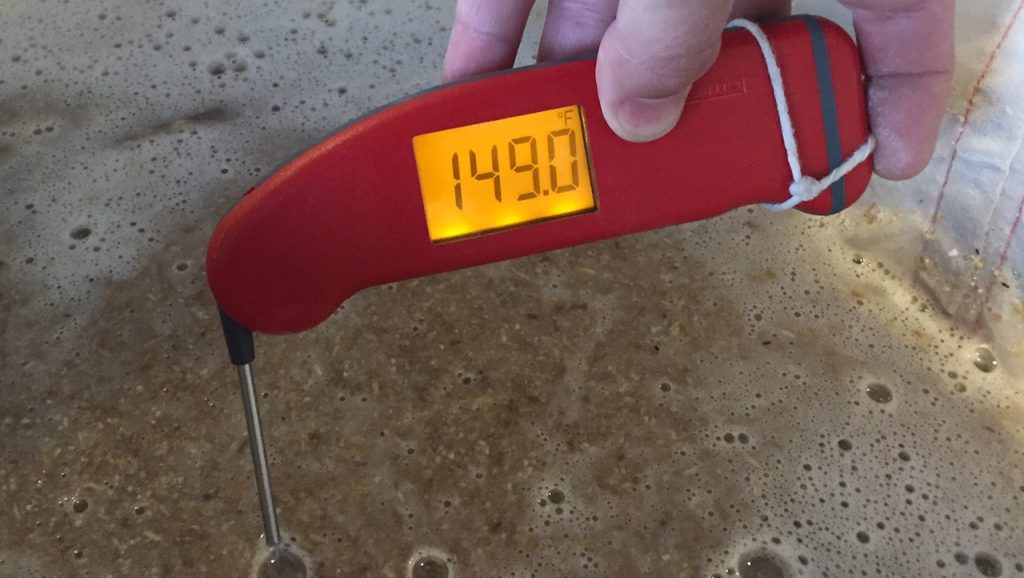
I let the mash rest for an hour, stirring 3 times throughout, then began collecting the sweet wort.
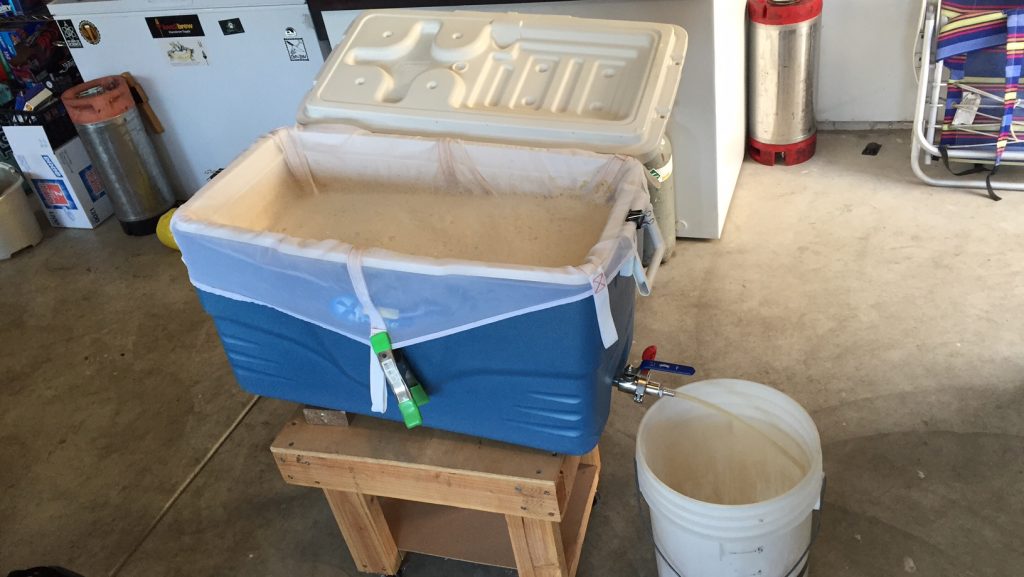
Following a quick batch sparge, the full volume of sweet wort was stirred in a single kettle to ensure homogenization before I transferred an equal amount to a second kettle.
Refractomer measurements from both batches at this point showed they were at exactly the same pre-boil SG. To ensure a seamless brew day, I started the boil on the lid-off batch 20 minutes before the lid-on batch, leaving a lid on the kettle the entire time. Eventually, both batches were boiling at the same time.
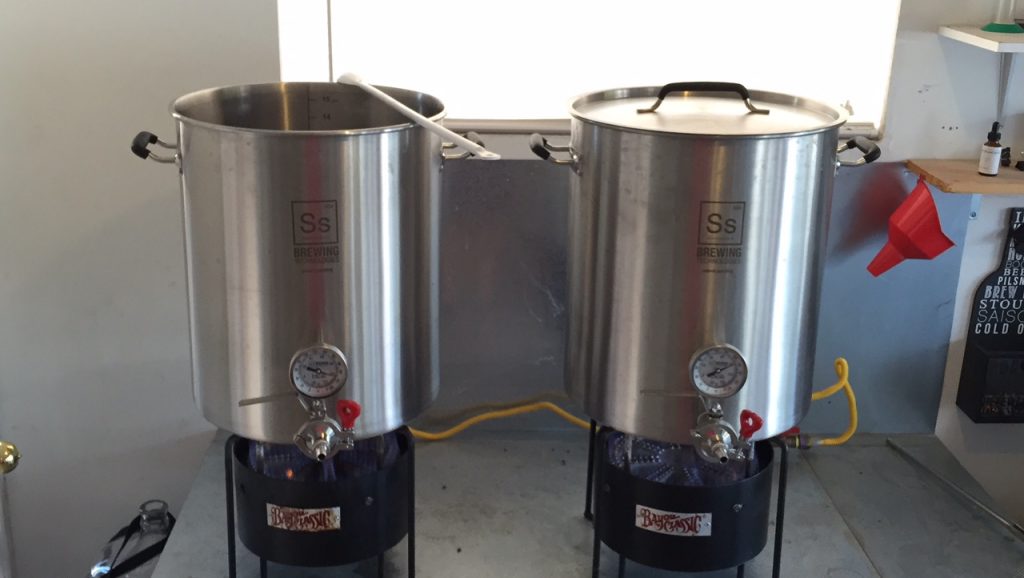
I fully expected to see some steam escape between the seam of the lid and kettle, and that’s exactly what I observed throughout the entire boil.
I also expected the condensate dripping back into the wort to more than make up for most of volume lost through escaping steam. Imagine my surprise when I discovered the boiloff rate for the lid-on batch was exactly the same as the lid-off batch.
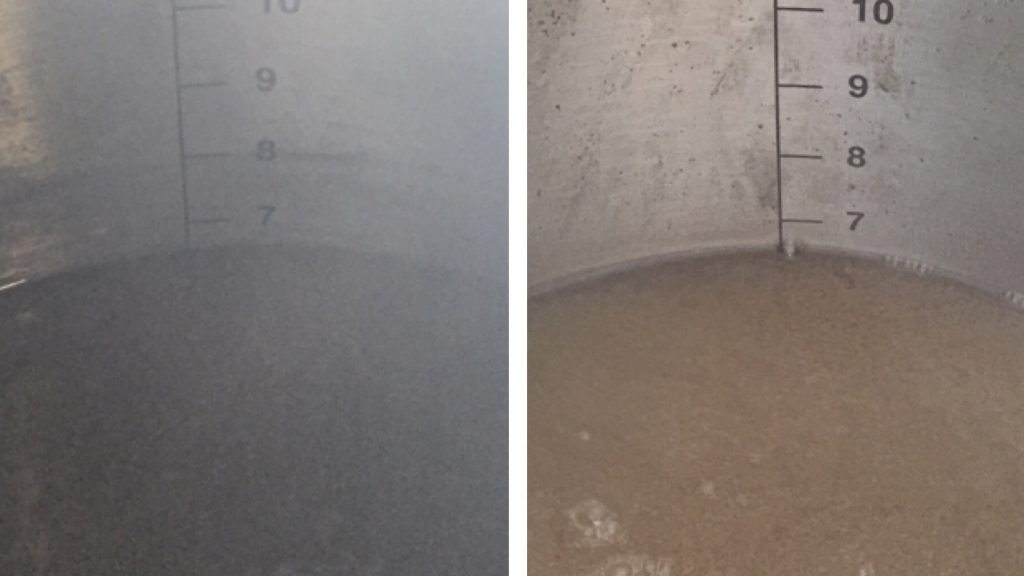
Over the course of the 1 hour boil, I removed the lid twice for no more than 3 seconds only to shake the condensate into the wort. Weird. I proceeded to quickly chill each batch to a few degrees above my groundwater temperature.
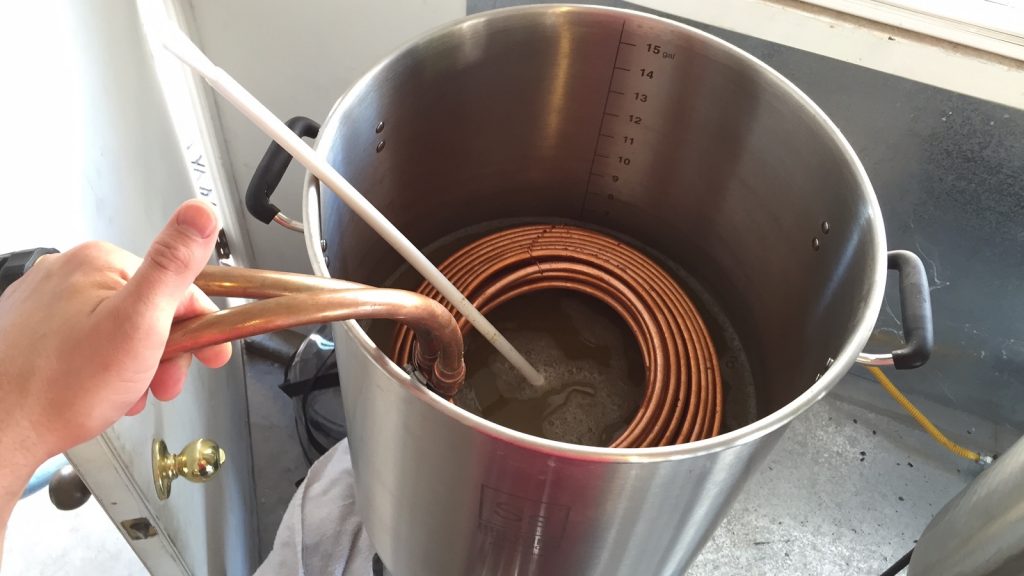
Refractomer readings from each wort revealed a very slight difference, which despite the post-boil volume similarity, made me wonder if the lid being on didn’t have some sort of impact.
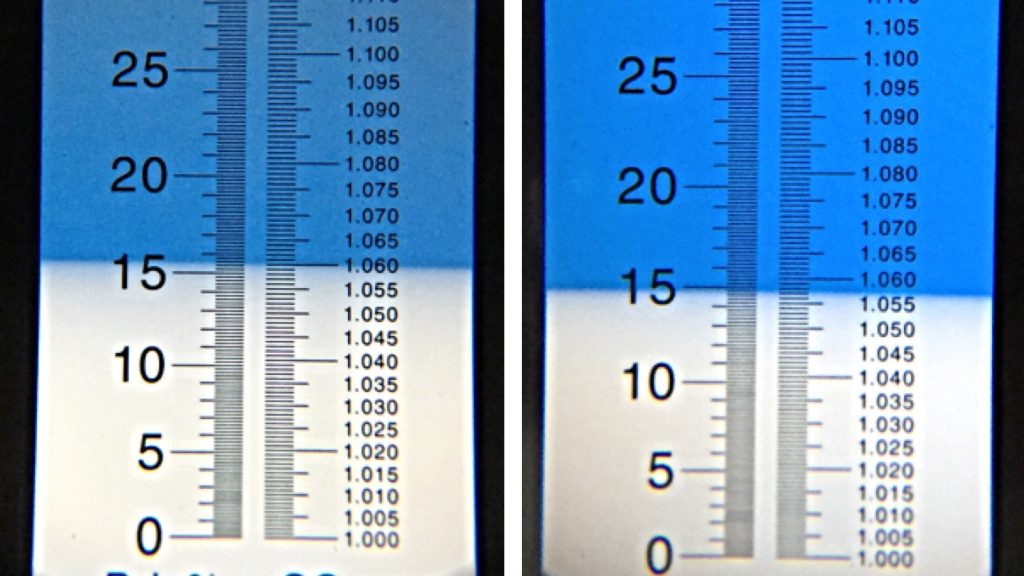
Each wort was racked into a fermentor and placed in a cool chamber to finish chilling to my target fermentation temperature of 55°F/13°C. I returned a few hours later to find both worts had stabilized at my set temperature then proceeded to pitch equal amounts of yeast slurry into each fermentor. Both beers were observed fermenting with similar vigor the following morning. I raised the temperature of the chamber to 70°F/21°C after 4 days of activity. While both beers showed signs of diminished activity a couple days later, it seemed the lid-off batch developed a much larger kräusen.
I took an initial hydrometer measurement at 9 days post-pitch that matched a reading 3 days later showing a very slight difference between the beers.
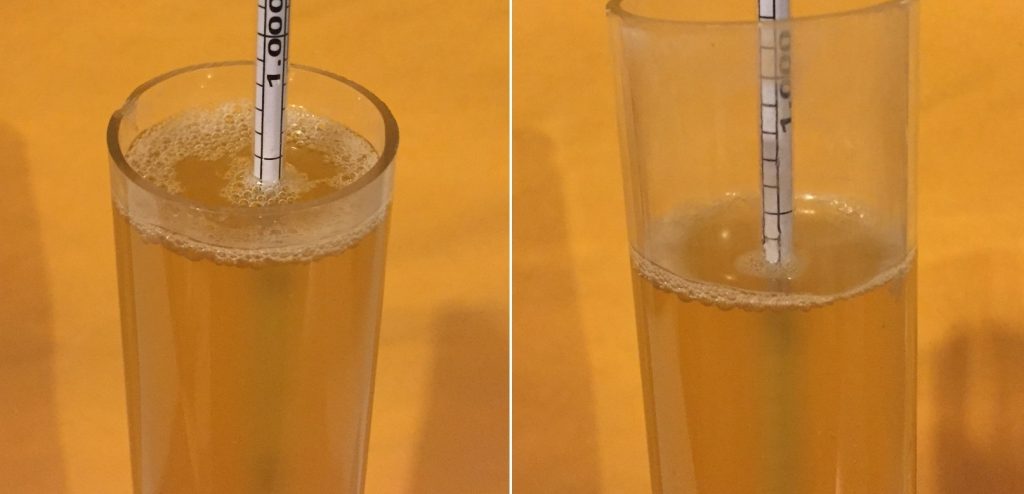
Following an 18 hour cold crash, I fined the beers with gelatin and kegged them a couple days later.
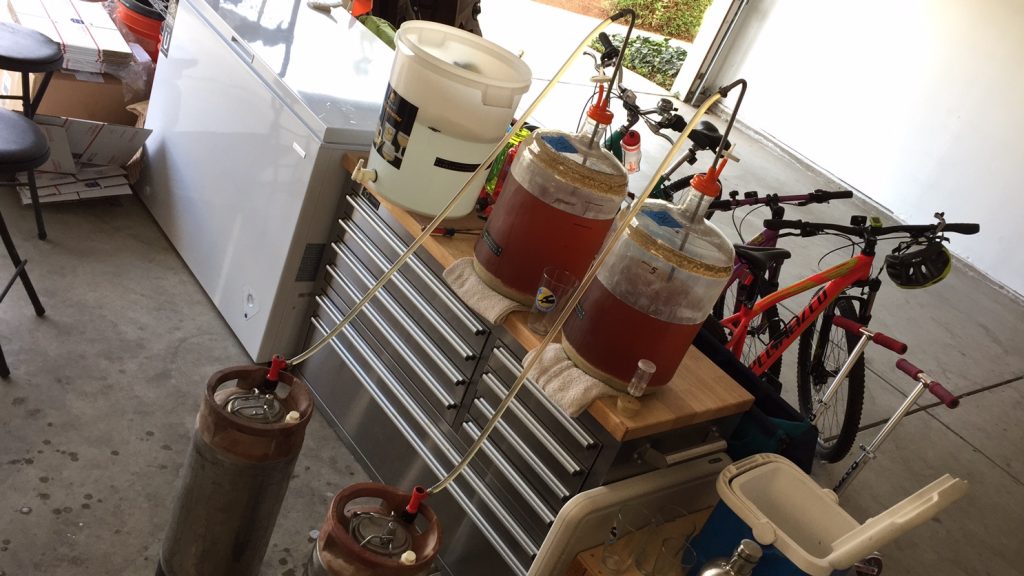
The filled kegs were placed in my cool keezer where they were burst carbonated overnight then left at serving pressure to condition for another week before data collection commenced, a point at which the beers shared a similar appearance.
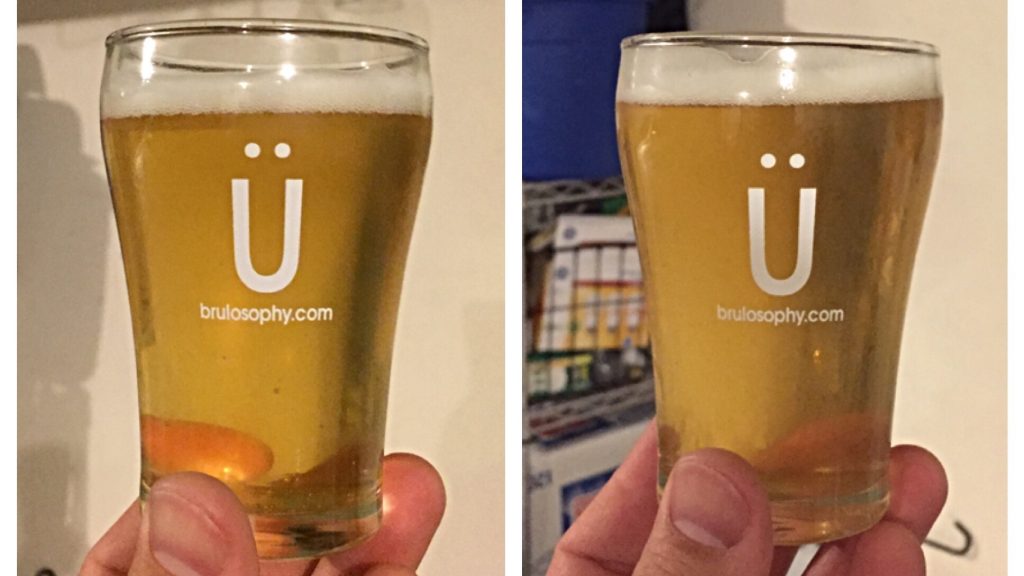
| RESULTS |
A total of 20 people of varying levels of experience participated in this xBmt. Each participant was served 2 samples of the lid-on beer and 1 sample of the lid-off beer then asked to identify the sample that was unique. Given the sample size, 11 tasters (p<0.05) would have had to correctly identify the lid-off beer as being different in order to reach statistical significance. A total of 8 tasters (p=0.34) accurately identified the unique sample, indicating panelists were unable to reliably distinguish a beer in which the wort was boiled with the lid on from the same beer in which the boil occurred with the lid off.
My Impressions: Biased by my performance on the DMS off-flavor xBmt where I was easily able to identify the intentionally dosed beer over many trials, I was convinced this was going to be a piece of cake. In fact, in a non-blind sampling of both beers the night prior to my first data collection session, I was pretty certain I perceived a difference, subtle though it was. The following day, after witnessing many people fail to distinguish the unique sample, I asked a taster to set me up with a triangle. Sure enough, when blind to which beer was in which cups, despite fully knowing what the variable was, I couldn’t tell the beers apart at all, they smelled and tasted exactly the same. I did this 5 more times over that weekend with similarly unreliable performance.
| DISCUSSION |
It’s only natural to wonder why the results are the way they are, though based on the data collection methods we use, we’re unable to provide any conclusive explanations. But we can certainly speculate. I can’t help but wonder how much DMS is actually contained in the covered kettle during the boil compared to how much escapes through the opening between the lid and kettle rim. Throughout the 1 hour boil, it was quite clear rather massive amounts of steam were indeed leaving the kettle, and it’s probably safe to assume it carried some DMS with it. Another potential explanation is that the lid-on beer did in fact contain a higher level of DMS than the lid-off beer and tasters simply were unable to detect it. Considering the fact participants from the recent DMS off-flavor xBmt were unable to reliably distinguish a beer intentionally dosed with DMS to over triple the standard threshold, this theory doesn’t seem all too far-fetched.
Then again, it could simply be that both beers shared similar amounts of DMS, which would likely be very low based on prior lab data showing a Pilsner boiled for 30 minutes had none. Either way, I’ll continue with my standard practice of boiling without a lid, though my confidence in contained brewing systems has admittedly increased. If anything, it’s results like these that lead me to question the accuracy of beer evaluation.
If you have any thoughts about this xBmt, please do not hesitate to share in the comments section below!
New Brülosophy Merch Available Now!
Follow Brülosophy on:
FACEBOOK | TWITTER | INSTAGRAM
If you enjoy this stuff and feel compelled to support Brulosophy.com, please check out the Support page for details on how you can very easily do so. Thanks!

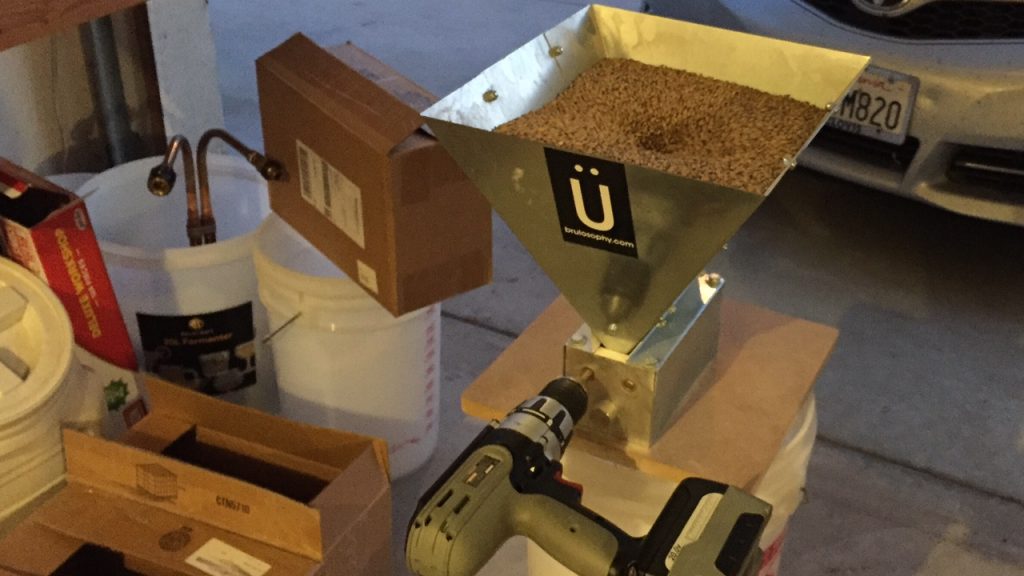
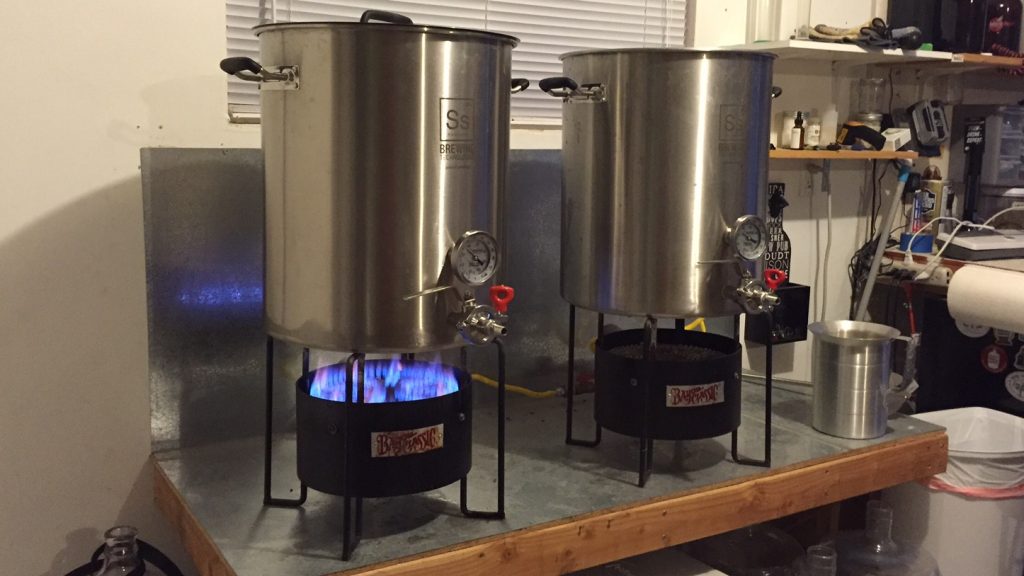
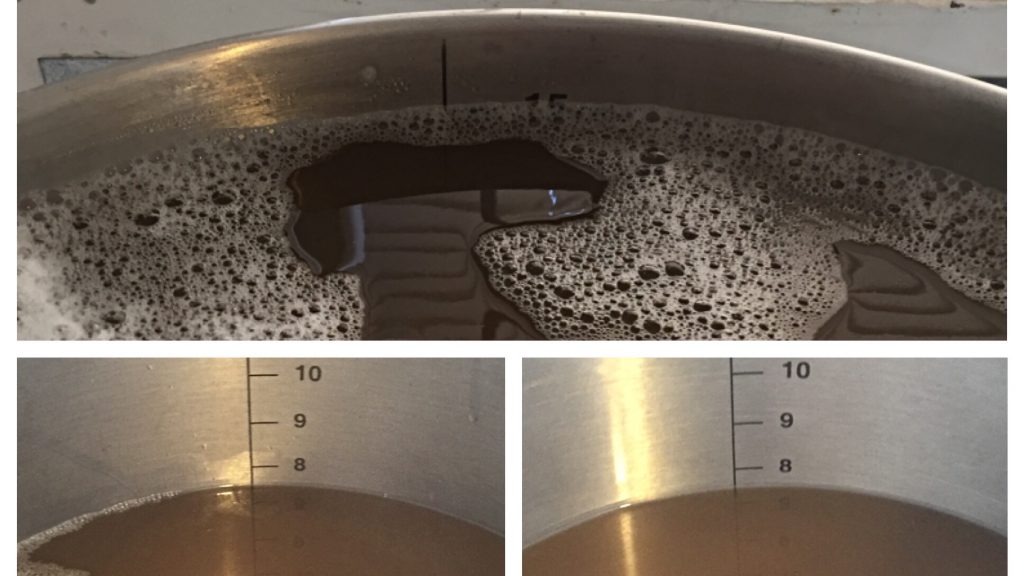
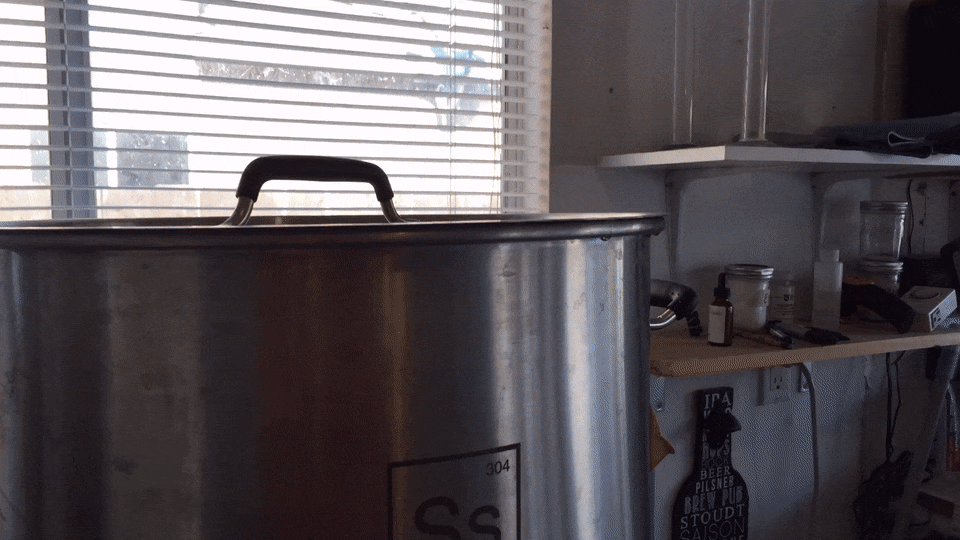
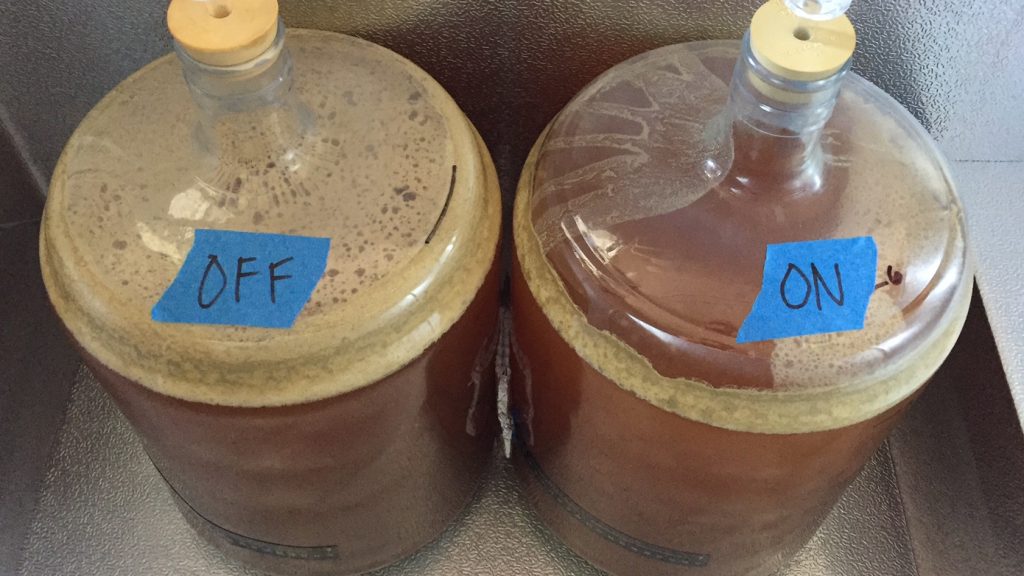










43 thoughts on “exBEERiment | Impact Boiling Wort In A Covered Kettle Has On A Festbier”
Thank you for this one! I am a lid mostly on (with a half inch gap) kind of guy as its the only way I can keep the boil rolling hard on my kit. Ive won medals at a national level and never had DMS raised as an issue!
Great experiment as always. I think the vigor of the boil may have something to do with it.
My first couple of extract beers were tarnished by DMS. I was boiling in a large stock pot on an under powered electric stove and I could only maintain a weak simmer with the lid 3/4 on. Perhaps the proper rolling boil meant that the DMS was driven off with the steam.
Yeah, my though exactly. I think the reason many boil lid on is to achieve a boil at all given their setup.
My kettle is not very fast and I don’t want to steam the whole apartment when brewing so I usually start the boil just simmering with the lid on, and only for the last 10 minutes or so bring it to a rolling boil with the lid off.
It would be nice to see a more extreme comparison of rolling-boil lid off and simmering lid on. 🙂 Maybe you would have to make up for the difference in boil-off with RO water to avoid the OG from producing a difference.
I thought this was going to end this way! I have a Grainfather and it’s lid has a hole in top for recirc arm. Thought about trying with it on, now glad to read I don’t need to worry about a bad batch. So besides, was this a good beer??
Same here Ken S. Niko (of Nikobrew) and I have been discussing this as he has a GF as well. I’ve got a couple lagers on the schedule next and plan to boil with lid on. It seems to be the only way to get a vigorous enough boil for melanoidan formation.
I have been waiting for this Xbmt. Especially as I have been thinking about containing and venting the massive amount of steam produced in my tiny brewery! Very surprised about the starting gravity though, I didnt see that one coming especially as the volumes were the same.
O had terrible DMS with a electric system that couldnt achieve vigorous boil, even with pale ale malt.
Without lab testing, the beer presumably had DMS, at least that’s how I think of it these days.
Good stuff. Marshall, I’m curious if you are doing 30 minute boils these days, even for lagers?
I mostly stick with 1 hour boils, if only to make my brew day a little less hectic.
In my limited experience I’ve seen that a low boil that isn’t rolling, chilltime, and grain manufacturer makes more of a difference to my tastebuds DMS wise than having a lid on. Grain seems to be the biggest issue for me, no matter how well I brew Rahr Pilsner I always end up with a touch of DMS.
I’m becoming more and more convinced what many people think is DMS is actually completely acceptable malt character, it’s just that we go searching for what we think DMS is without truly understanding what the malt really imparts. I could be wrong.
I know this is a really old post but I had a local beer last night that was an Extra Pale Ale made of 100% pilsner malt. As soon as I saw this reply I thought about that beer. That noticeable “pilsner malt character” could have definitely been mistaken for an off flavor, especially when found in an unexpected place.
I completely agree.
What a coincidence – I was just going through old brewing tv episodes and saw this comment by you a day before you posted this blog post:
https://vimeo.com/17846858#comment_7661823
🙂
Great experiment. Keep up the good work!
I tried linking directly to the comment, but the blog commenting system was trying to be smart and posted the video.
Oh man, what an embarrassingly presumptuous comment that was, a remnant of my know-it-all past.
I like to hold a lid in the steam at an angle. The water will then run down the lid and into a glass. At the start of the boil I can easily detect the DMS. I do this every 15 minutes till I can no longer taste the corn. Doing this test with different brewers I have found that
DMS is a flavor were some people are much more sensitive to then others.
Great way to get aquatinted with how DMS tastes. Thanks for the tip.
When i saw the similar amounts of boil-off in the emages, my reaction was that you wouldn’t see any difference in DMS character between the two beers. I was taught in brewing school that 4 percent boil-off is adequate to remove free DMS during boiling. The free DMS is usually removed after 30 minutes of boiling, but you can get new formation from DMS-precursors during hot-stand above 85 C. A longer boil breaks down these precursors.
Seeing how you had a boil-off of 1/7.5 Gal, or 13 %, it would have been very surprising if you had a DMS problem. With a boil that vigorous, you don’t get enough condensation on the lid causing a problem. It would be interesting to see if you get any difference in boil-off with a calmer boil.
Maybe try with a pressure cooker, if you don’t pick up the DMS from that, I don’t know what will. Also if the beer is still green, would you even be able to pick up on it. Most of my brews I age at least a month in bottle or keg before I make any notes.
Because the DMS is formed in the boil it will be there in green beer also. Unlike yeast formed off flavors I don’t think it will age out.
DMS is extremely volatile. There is new science regarding the thermodynamics of DMS that shows that it will volatilize even below boiling temperatures (I try to explain it here: http://www.milkthefunk.com/wiki/Dimethyl_Sulfide#Volatility_of_DMS). DMS also blows off during fermentation, again due to the high volatility.
Another aspect of DMS that people often ignore is that bacterial contaminations can cause lots of DMS. Some bacteria species can convert dimethyl sulphoxide (DMSO) into DMS in percentages as high as 37%, versus S. cerevisiae which converts around 5%. Spontaneous fermentation, for example, is well known to have high amounts of DMS produced in the early stages of fermentation. That DMS eventually volatilizes off over around 6 months to levels that are typical in other beer styles. This makes me wonder if contamination is more of a source for DMS versus SMM conversion during the boil.
My one anecdotal experience: the only time I have ever been confident that I detected DMS, other than in my own spontaneous fermentations, was during my BJCP exam. Our proctor brought a pilsner that was cold crashed after 2 days of fermentation! I got a lot of tomato sauce in that beer! Funnily enough, I don’t recall anyone else picking out DMS in this beer specifically (and who knows, maybe I wasn’t actually tasting DMS).
On a somewhat unrelated note to the actual thing being tested; I noticed you used 34/70 but opted to ferment at 55F ramping to 70F rather than just doing it at straight ale temps like you had been. Did you change this up for any reason in particular, or were you just tinkering around?
Admittedly, a part of me wanted to avoid people claiming any differences were because of the (similar) ferm temps. But I also figured the higher OG might cause greater exothermic heat, which I wanted to avoid for the variable’s sake.
I wonder, too, how much it is the drinkers pallete? From my own experiences, for whatever reason, I seem to be more susceptible to tasting DMS. Quite a few times I’ve gone to breweries with friends and have a beer I can’t drink because all I taste is Spaghetti O’s. All while everyone else is drinking and merry. I’d be interested in doing this experiment and seeing if I could tell the difference. Or, is it all in my head? *Don’t ask my wife that question!*
I have the same issue, my tasting bud`s are sensitive to DMS. It`s not a gift in my eyes, since I`m missing out on what seems to be realy nice beer in my friends mouth and eyes.
I think at least some of the testers should be people who do have a problem with DMS. Apparently only 50% can taste DMS, and only some are sensitive to it.
Do not remember where I read about it, but it should be consider`d a factor in suche exbeeriment`s as this one.
Love the tests and info you guys provide by the way 🙂
Ten years a propane stove-top brewer of 2.5G batch-size pale ale recipes.
The stove’s firepower … such as it is … requires the kettle to have a lid for the wort to reach a rolling boil. Once the boil starts … a fry pan splatter screen is slipped under the lid to allow steam to escape but trap enough heat to keep the boil going strong.
The lid is tipped periodically during the boil to allow the condensate to run-off into a bowl.
After almost 200 batches … there’s never been the slightest hint of aromas or flavors commonly associated with DMS in any beer brewed with this method. Even recipes where pilsner made up the bulk of the grain bill.
As for DMS forming if wort isn’t chilled quickly to pitching temperature; this seems equally questionable seeing how well whirl-pooling 20′ @ 150°F works.
-HM
Would it be fair to say that modern malts such as pilsner malts are much more modified than previously.
this would probably result in a lower expected DMS?
Given you boil pilsner malt for 60 mins these days, that kinds of stands to reason.
so, if you have low DMs in the beerto start with, then your dms levels will remain low with the escaping steam lid on/ or off…
Of the 8 correctly identified taster, what’s the distribution of their experience level? I wonder if it’s due to experience of knowing what to look for in DMS off flavor
Mostly BJCP judges, recognized to certified…
https://brulosophy.com/2016/01/21/investigating-the-bad-palates-argument-a-graphical-look-at-xbmt-performance-based-on-experience-level/
Pardon me if this has already been mentioned, but I wonder if the nature and extent of volatilization was the same in both treatments since you observed steam escaping around the edge of the lid and that your densities were the same after the boil (indicating an equivalent amount of water had boiled off). If equal amounts of water left the kettle, then seems plausible that equal amounts of volatiles did as well. Very interested in this as I am wondering about my own set up where my boils are perhaps not vigorous enough. Thanks for your experiments!
This is the second XBMT that really has me re-thinking if my standard 90 minute boil is necessary.
Necessary? There are few things I’m comfortable stating with certainty, but this isn’t one of them: no, 90 minute boils aren’t necessary 🙂
It’s something I read in brewing classic styles, they recommend 90 minutes when using pilsner malt, so I just starting using 90 minutes for every batch, whatever the malt, looks like I can save 30 minutes.
I do shorter boils now thanks to these exbeeriments! Yay saves gas and time
Great exbeeriment!!
I am amazed again. I was convinced this time there would be strong significant results….
I can’t see the recipe but I think that the first time I read the entry was there.
Cheers
This was a fascinating article. Great testing methods. Thanks!
Might want to read the article on boiling by Martin Brungard in the current issue of Zymurgy and take a look at his presentation on the same subject at the 2018 AHC
Spoke to him a few weeks ago about it. I always enjoy reading Martin’s stuff!
So I’ve been thinking about this again recently, and I’ve started using a 30 minutes on/30 minutes off boil schedule with my Robobrew and that seems to be doing the trick, until of course, it doesn’t. Anyone have any thoughts on this?
If the boiling point of DMS is 37°C, would it condensate at all? The lid will be far hotter than 37°C, so wouldn’t the DMS keep its gas form and escape as soon as the lid is lifted? I think I’ll try a small one gallon batch in my pressure cooker and see what happens.
Thanks for sharing this information. Keep sharing.